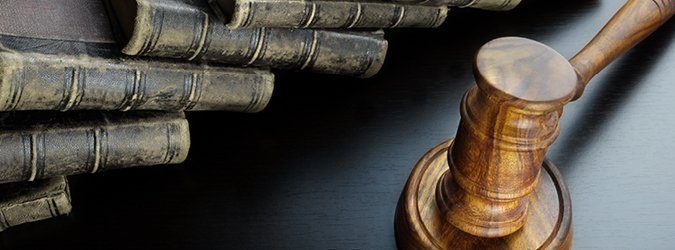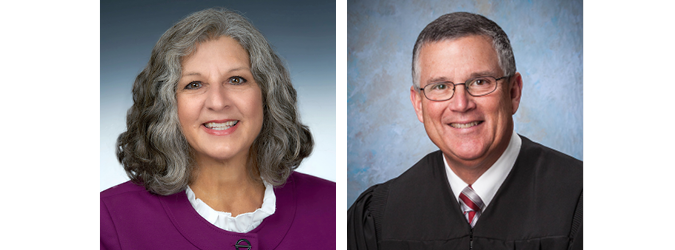Joseph Zayas, New York’s First Latino Chief Administrative Judge: ‘We Want To Be More Proactive’
10.30.2023

The job of New York’s chief administrative judge is equal parts problem-solver, relationship-builder and collaborative consensus-builder.
Responsibilities of the position include, but are not limited to, ensuring that things run smoothly at some 300 courthouses statewide, managing a $3.3 billion annual budget, boosting the morale of a 15,000-member non-judicial workforce still regrouping after the COVID crisis and rebuilding the strained relationship between 3,600 judges and the state Legislature.
That to-do list would perhaps make even the most accomplished jurist think twice about accepting the job. It was certainly not high on the list of potential opportunities for the man who currently holds the title – the Honorable Joseph A. Zayas – at least not at first.
“I didn’t want this job,” Judge Zayas said bluntly in an Aug. 2, 2023 interview on Amici, a podcast hosted by John Caher, senior adviser for strategic communications at the New York State Unified Court System. “I had the best job in the world . . . in the Second Department. It was a peaceful existence. It was intellectually challenging, and I had no intention of leaving.”
Judge Zayas said he had rebuffed suggestions that he throw his hat into the ring for the chief judge’s job in the wake of the “unfair” treatment by state lawmakers of the governor’s first nominee, the man who served as his presiding justice, Hector LaSalle. And the idea of returning to the stress and time-consuming strain of an administrative role did not appeal to him.
But something clearly changed his mind. Because this past May, Judge Zayas made history when he was appointed by Chief Judge Rowan A. Wilson to be New York’s first-ever Latino chief administrative judge, the highest-ranking administrative judge in the court system.
So, what was the deciding factor? Judge Zayas says it was the combined efforts of three very important people: his wife, Catherine; his mentor, former Presiding Justice Rolando T. Acosta; and his new boss, the chief judge, who – in keeping with his reputation as an expert and persuasive litigator – successfully pleaded his case over a private dinner.
“I’ve always been attracted to brilliant, smart people and great tacticians,” Judge Zayas explained during a recent interview with the State Bar Association. “[Chief Judge Wilson] had all the right instincts about what direction the court should go in and how we should get there. I believed he was somebody I could work with, and we could get things done.”
Judge Zayas was also mindful that the departure from the bench of Judge Acosta this past spring would leave a significant leadership void in the Latino legal community, which was still reeling from the “gut punch” of LaSalle’s missed history-making opportunity to serve as New York’s first Latino chief judge.
“[W]hat happened to him, plus Rolando’s leaving, was leaving a real vacuum in leadership in [the Office of Court Administration],” Judge Zayas told Caher. “My wife as well was concerned that the Latino community, especially the judges, needed to be inspired in some way. This would make history. And somehow, before I knew it, we agreed that maybe this is something we need to do.”
Expanding diversity on the bench is critical, Judge Zayas said, because it will lead to fairer results in both criminal and civil cases. But he also firmly believes that improving diversity across the board – diversity of thought, as well as ethnic representation – is the ultimate key to dispensing a higher quality of justice for all New Yorkers.
Though advocates of a judicial reform and simplification plan advanced by the previous chief judge argue the proposal would improve diversity by establishing a consolidated court structure, Judge Zayas maintained the improvement would be “negligible” at best. Instead, he said, his short-term priority is to “change the culture of delay” and provide additional resources for the beleaguered and backlogged Family Court system.
Another top priority, Judge Zayas said, is to create a task force that will examine how to expand mental health courts and address the mounting crisis of mental health challenges faced by defendants statewide. His passion for this effort is born in part of the many years he spent working for Legal Aid, his creation of the first Mental Health Court for misdemeanor defendants in Queens and his personal experience growing up as the son of a father who struggled with schizophrenia.
“I saw too many people getting rejected from drug treatment by the court because they had a dual diagnosis; they had mental health and addiction problems,” Judge Zayas recalled. “I knew we couldn’t send these people back to high-volume courts, so we created something new to solve that problem. . . . It’s not as if I said to myself, ‘What happened to my dad is going to motivate me to start a Mental Health Court in Queens,’ but did it have an impact? I imagine that it did.”
Five months after his swearing in, Judge Zayas has settled into the chief administrative judge’s job and is focused on strengthening and rebuilding what he characterizes as “broken” relationships both inside and outside OCA.
The challenge of restoring relationships is something Judge Zayas has wholeheartedly embraced. He insists he is making progress with a particularly recalcitrant group – members of the state Senate Democratic majority, who clashed with the judiciary during the LaSalle nomination fight – as well as with the governor’s office, the media and the public.
“It’s pretty amazing how quickly that listening to people – talking to them, spending time with them – will mend relationships,” Judge Zayas said. “All of this is part of the chief judge’s plan to restore the integrity and reputation of the judiciary and OCA. This is someone who believes in a collaborative approach to making decisions and sees relationships as the primary way to get things done – even if it takes more time.”
“There were so many things done that, quite frankly, alienated the legislators, and I’ve been telling [senators] to give us a chance because we want to be transparent,” he continued. “We’re aligned with them on a lot of things – we want more mental health courts; we want more treatment courts; we want more options for young people charged with crimes. So, they need to give us a chance to work with them, and my sense is that they’re amenable to that.”
Along with working to make OCA’s legislative affairs approach more responsive in real time, Judge Zayas said, he and the chief judge are building a civic engagement plan to be “out in the community more.” They also recently announced a restructuring of the Unified Court System’s communications operations, which will be headed by Al Baker, a veteran former reporter and former executive director of media relations at the NYPD.
“There’s a lot of good things the courts are doing – from treatment courts to adoptions and everything in between – but that’s not getting out there,” Judge Zayas said. “We’ve been so reactive; we want to be more proactive. We have a PR problem, and we have to deal with that.”
Judge Zayas is bringing an outside-the-box approach to every aspect of his new job, including making a pledge that he will participate in the Physical Aptitude Test all court officers must pass, which includes timed sprints, as well as 30 sit-ups and 30 push-ups, both performed in a minute.
The goal, Judge Zayas explained, is to “encourage” the biggest class of court officer candidates in OCA history following a significant shortage during the pandemic and “let them know we’re rooting for them.” But there’s a healthy dose of competition between him and his boss.
“My goal is passing, of course,” Judge Zayas confided. “But the real question is whether I will be able to beat the chief judge’s score.”






